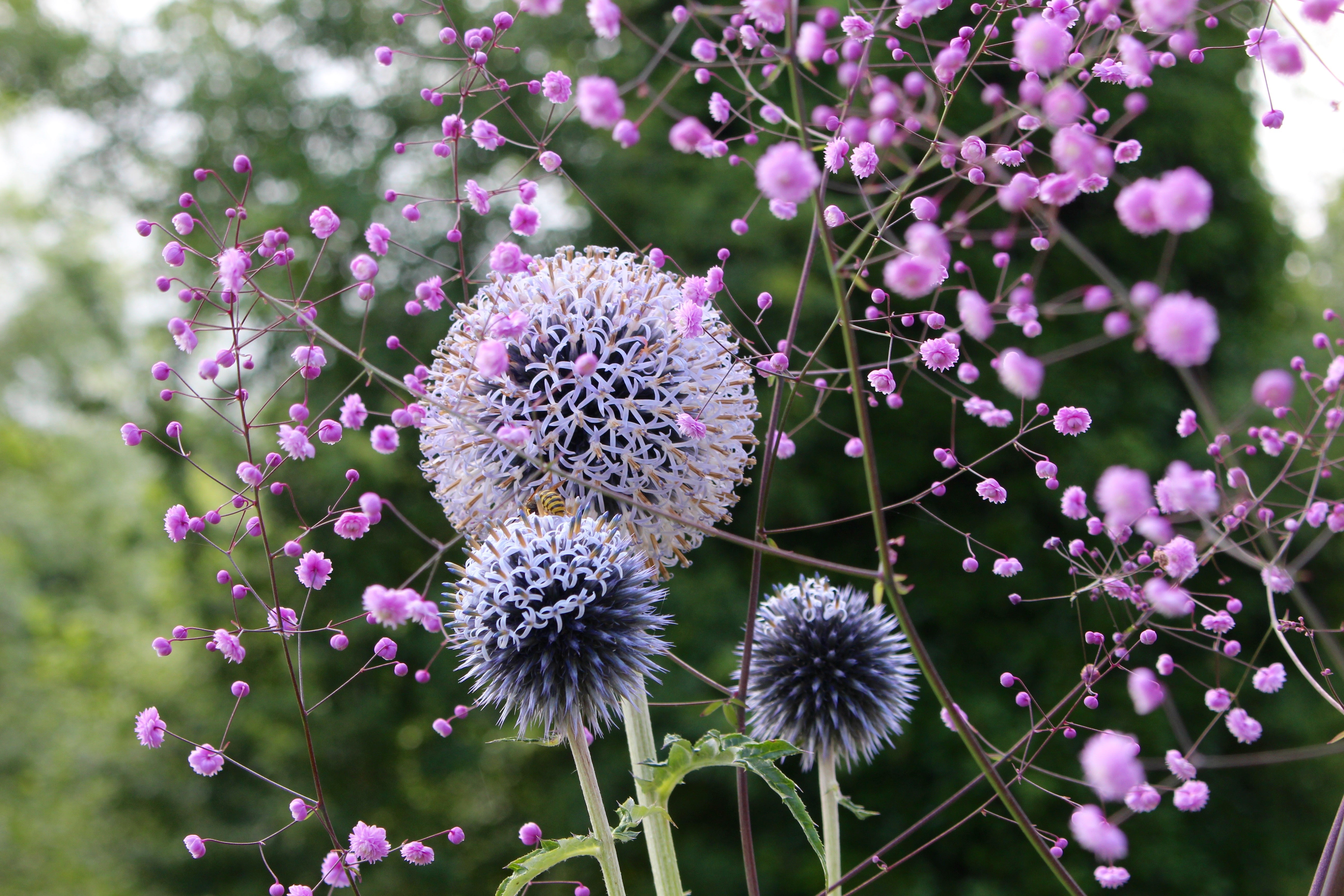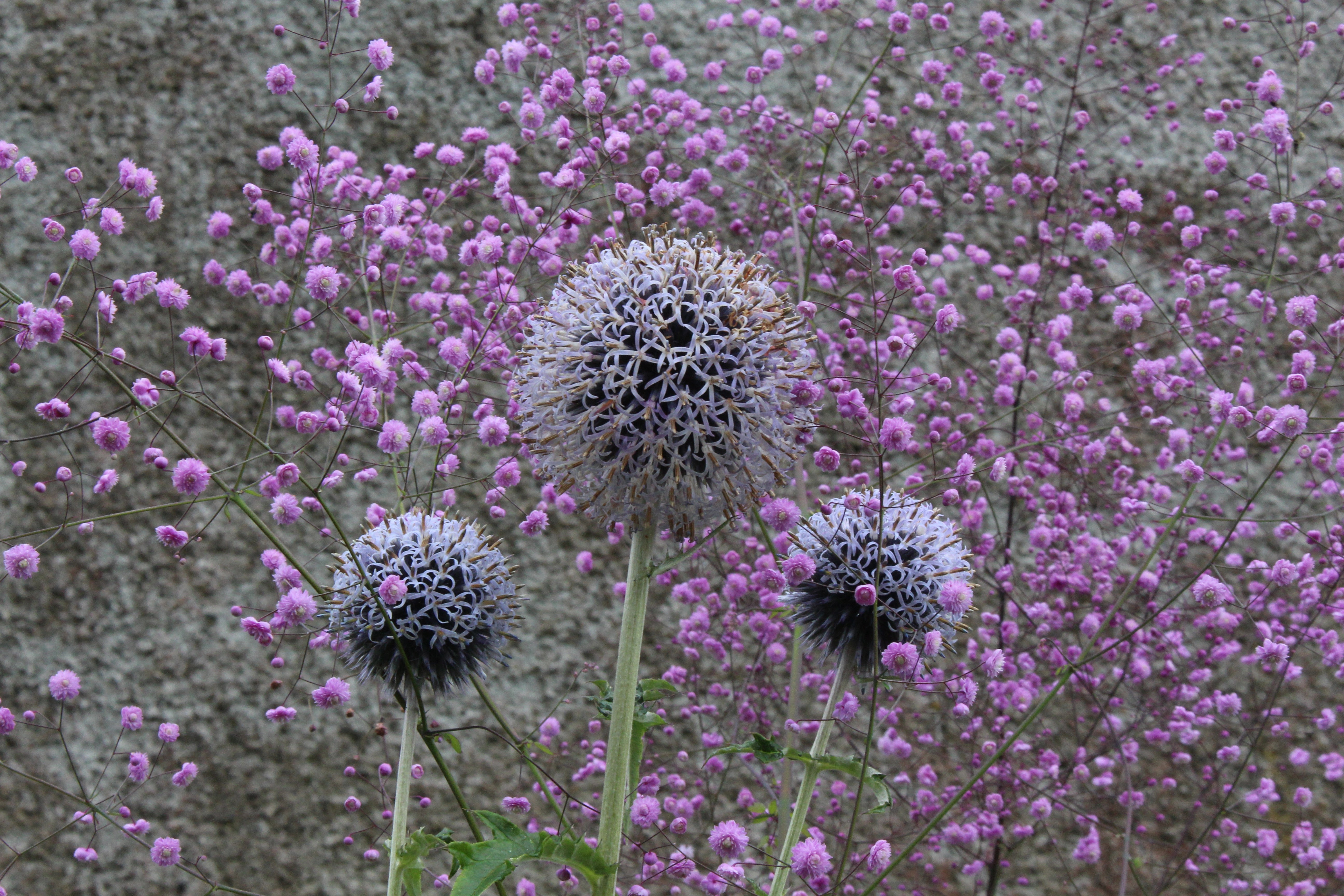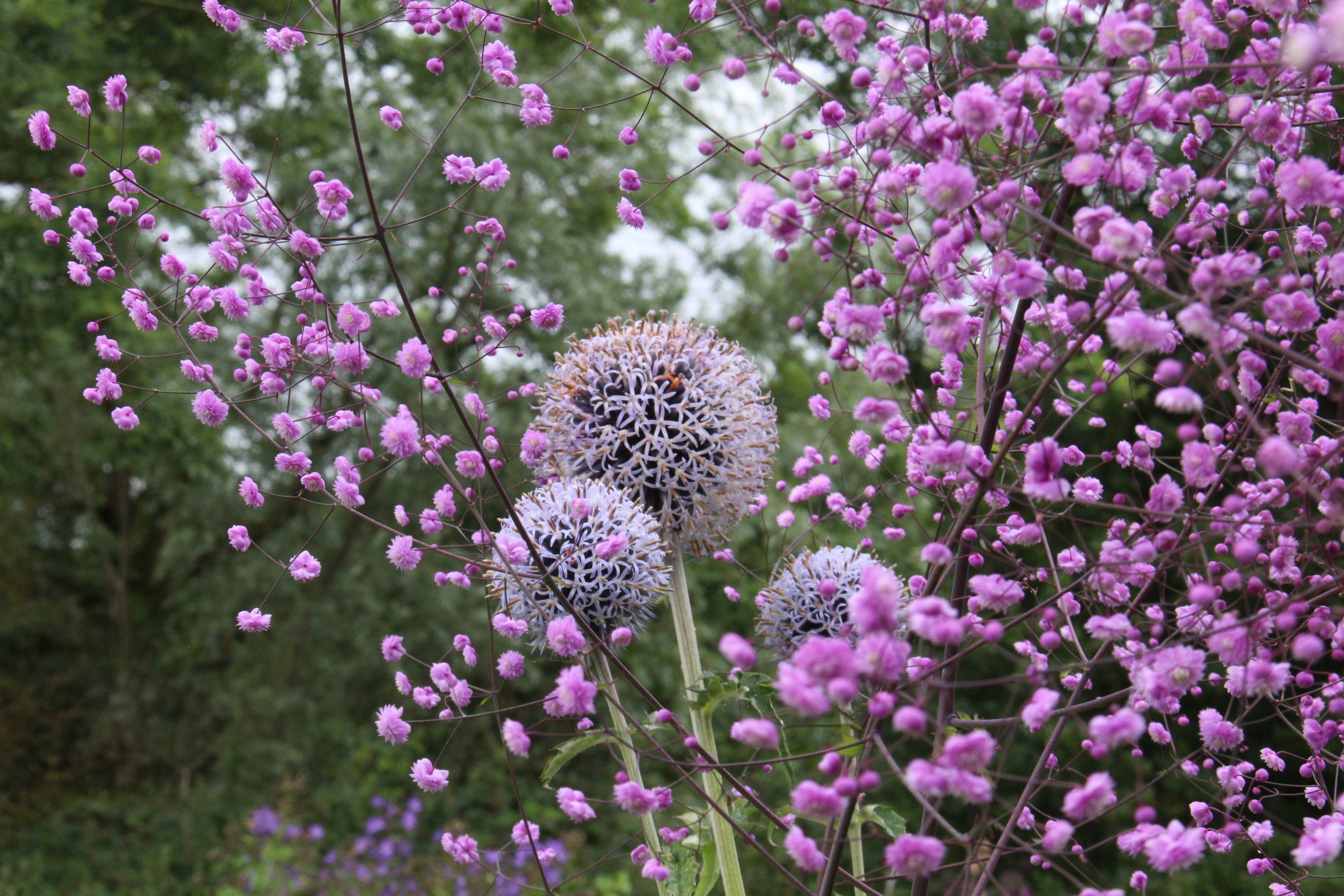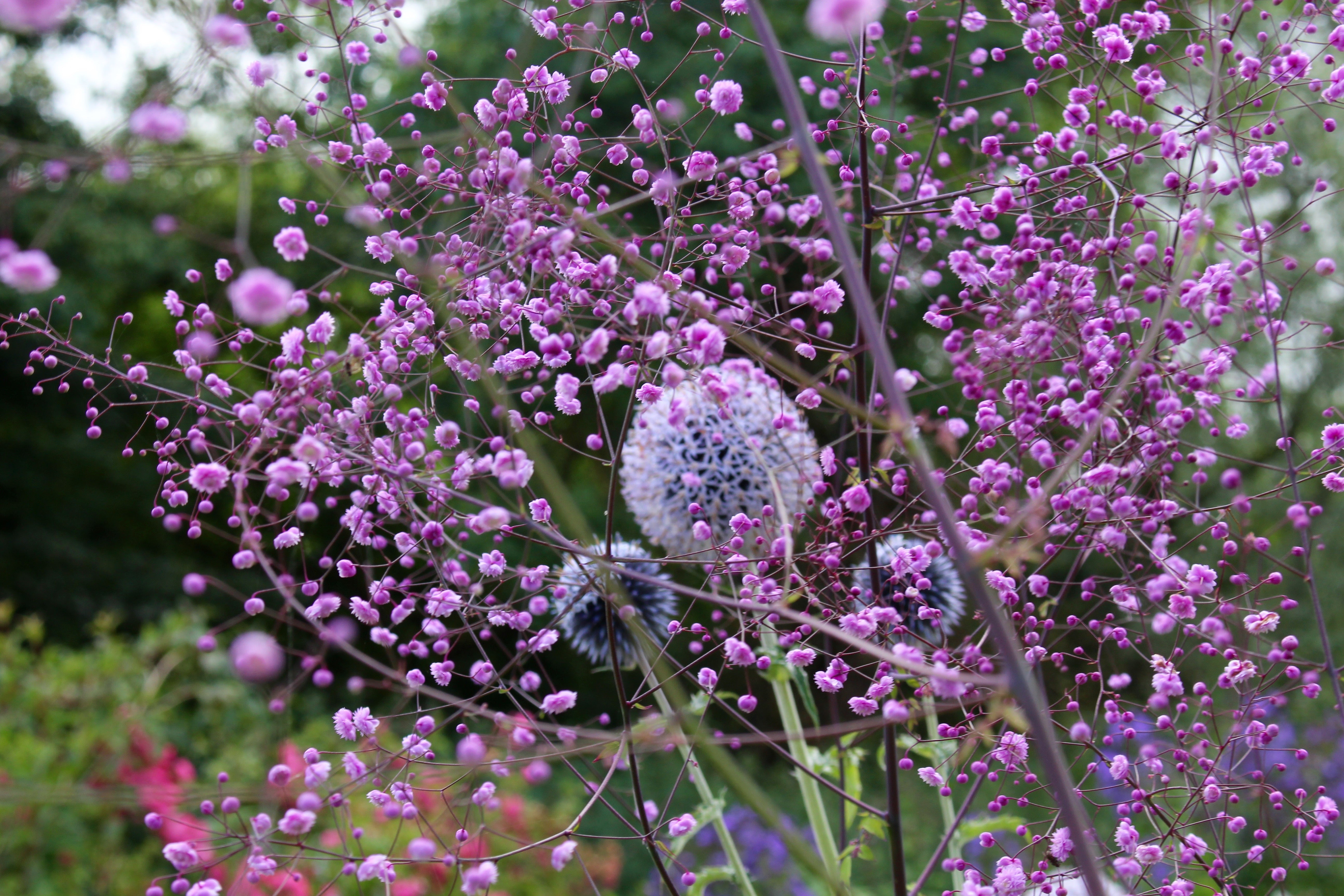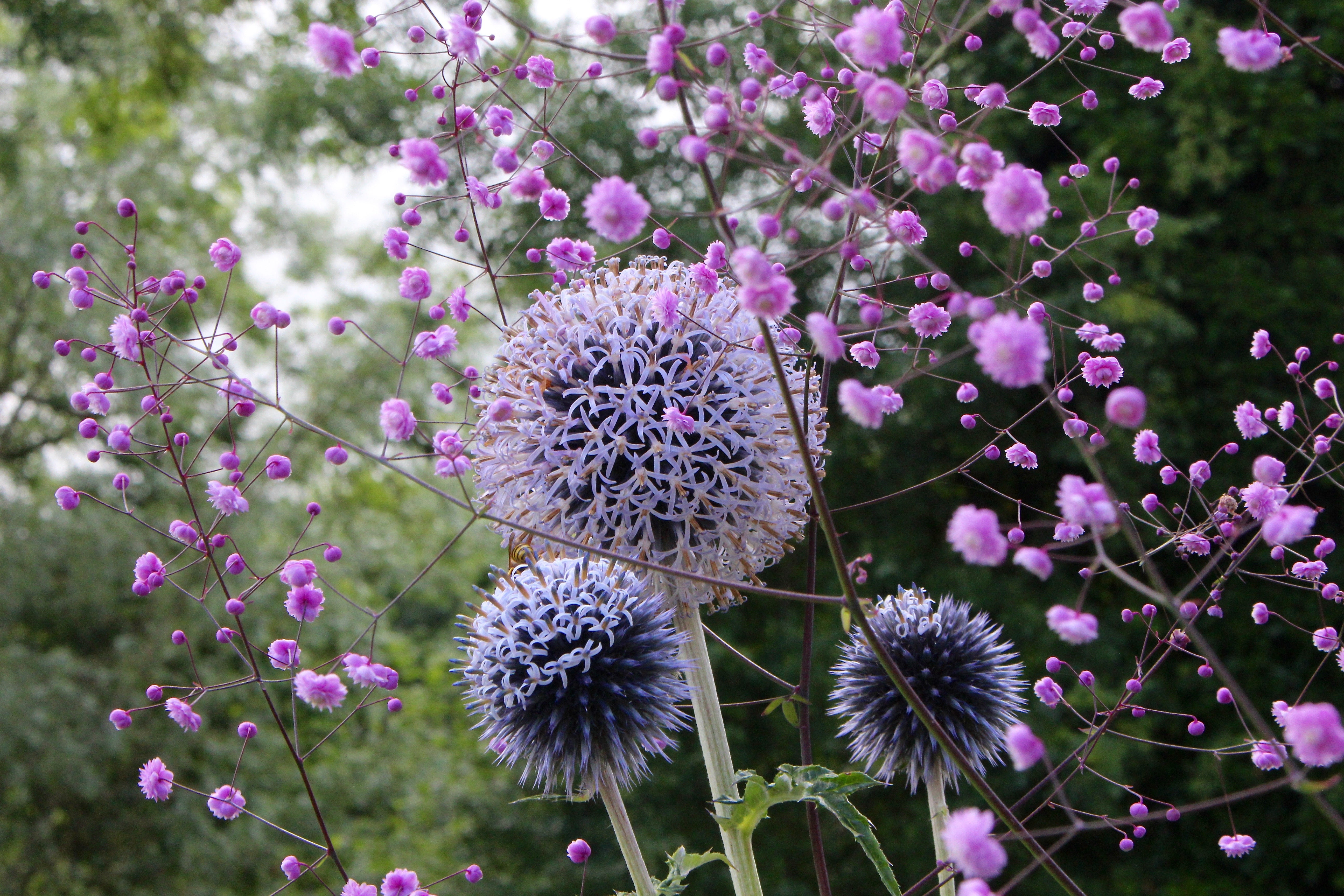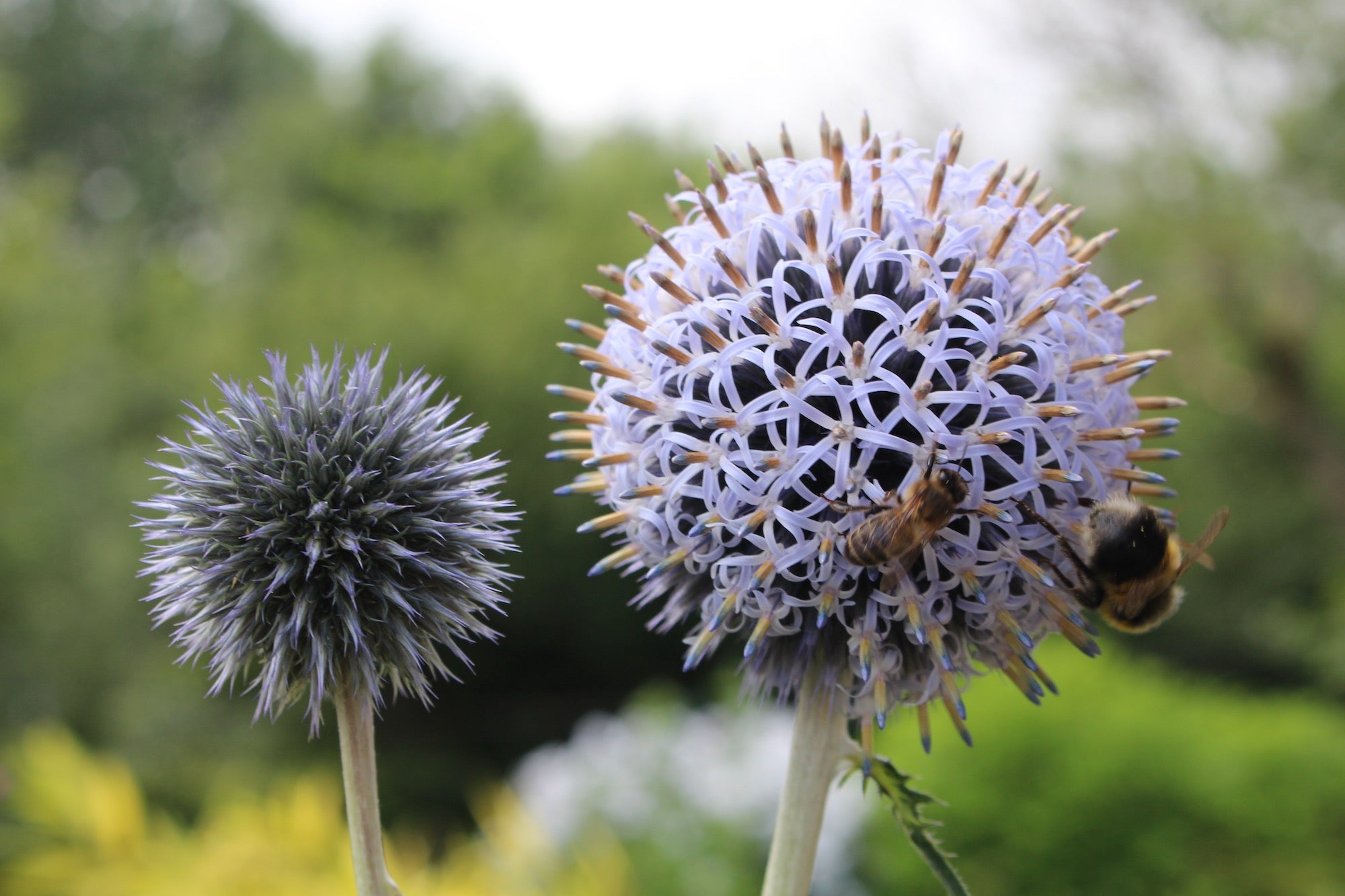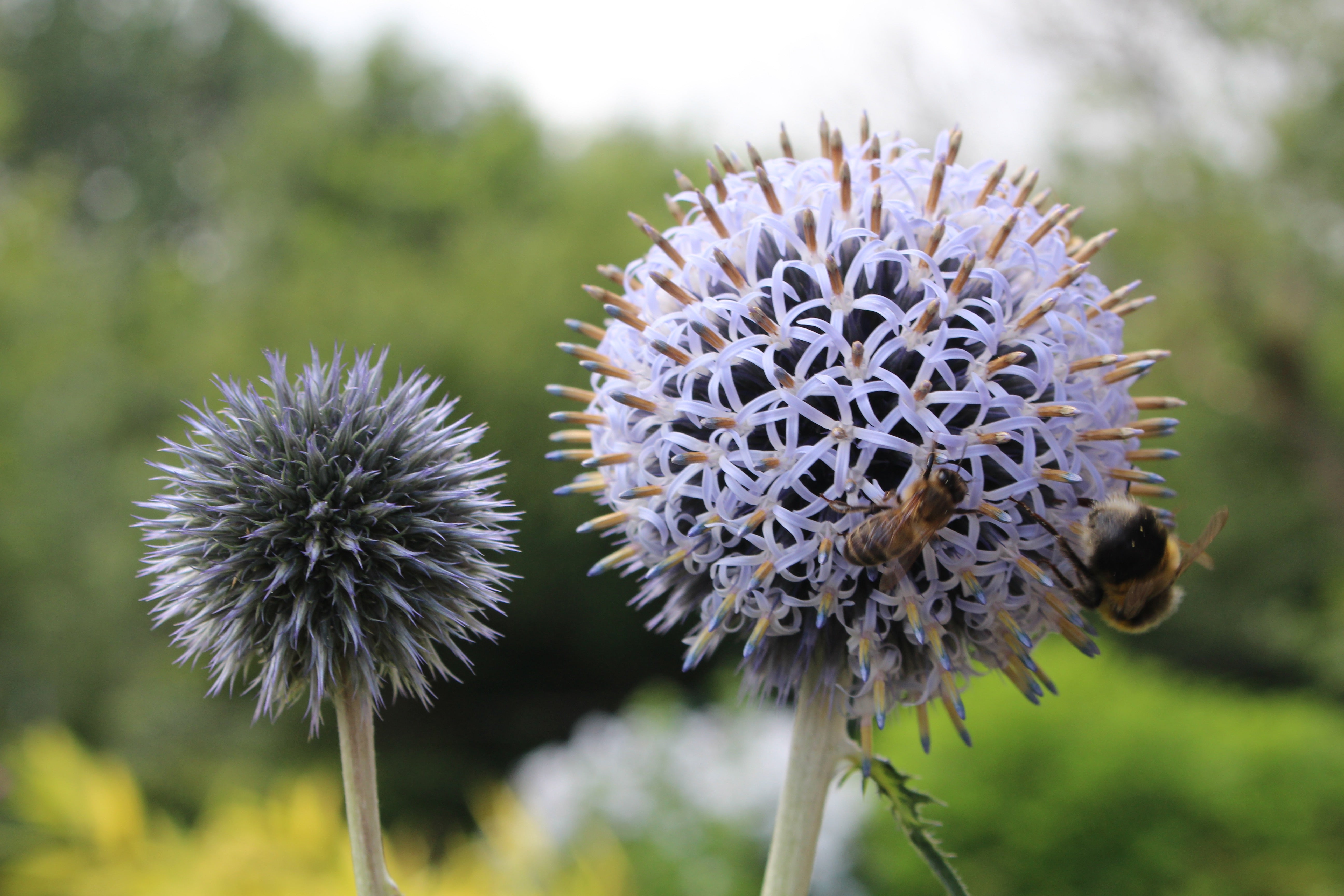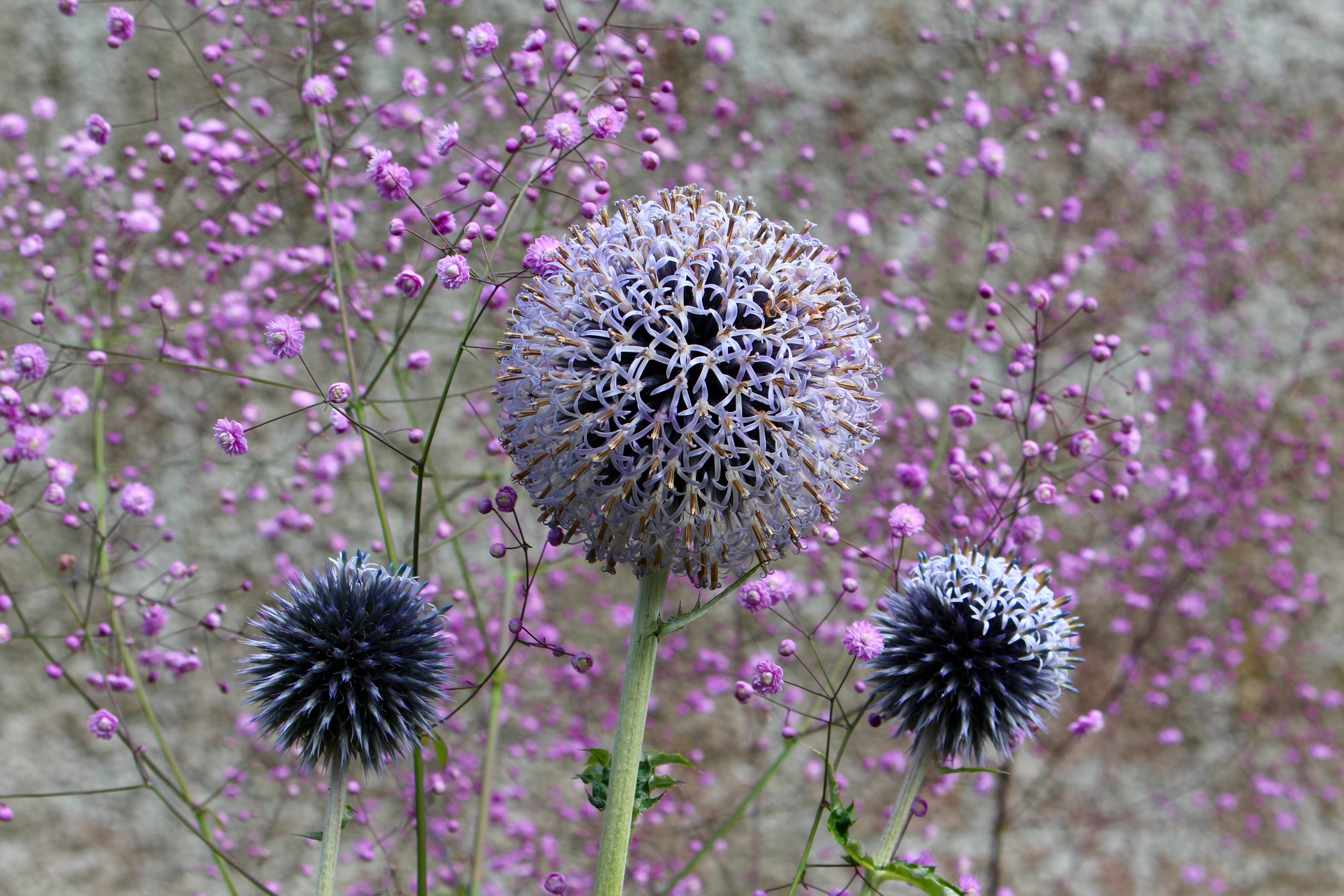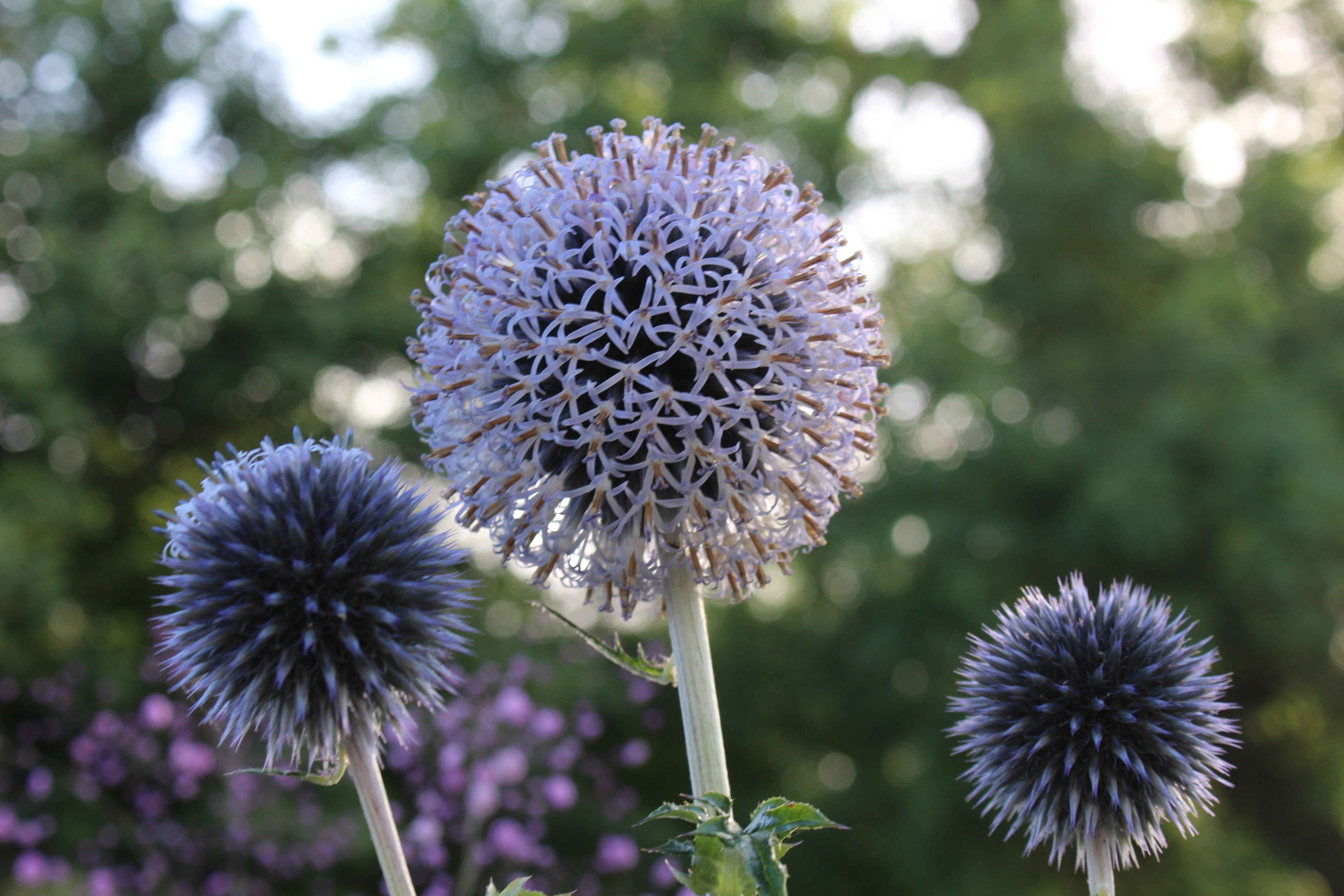Echinops ritro L.
Approx. 0.5 litre pot
About this cultivar:
Echinops ritro L. probably gets it name, ritro (RIH-tro), from the Greek for globe thistle, rhytros. I don't know where the 'L' comes from. Guess the RHS stick it there for fun. Lovely?
Any way, it is a clump-forming, 4-foot tall plant with golf ball sized blue flower heads atop stiff, rigid stems clad with deeply lobed, dark green, thistle-like foliage. Globular, thistle-like, deep steel blue flower heads (1-2” diameter) bloom at the stem tops in summer. Great, great, great, great cut flower plant.
Has the Royal Horticultural Society Award of Garden Merit (RHS AGM).I think it looks particularly well with pink Thalictrum growing through it - see photos.
- Position: Full sun, partial shade
- Soil: Almost any soil, grows well in Ballyrobert
- Flowers: July, August, September, October
- Other features: Grows well in Ballyrobert, Bees and Butterflies, Interesting Foliage or Fruit, Royal Horticultural Society Award of Garden Merit (RHS AGM), Cut Flowers or Dried Flowers
- Hardiness: H7 - Hardy in the severest European continental climates (< -20°C), Fully hardy - grows well in Ballyrobert!
- Habit: Clump forming, bushy
- Foliage: Deciduous
- Height: 90 - 120 cm (3 - 4 ft)
- Spread: 60 - 90 cm (2 - 3 ft)
- Time to full growth: 2 to 5 years
- Plant type: Herbaceous Perennial
- Colour: Green, blue
- Goes well with: Verbena bonariensis, Verbascum, Perovskia, Aconitum, Artemisia, Achillea, Iris, Deschampsia or even Rudbeckia. Thalictrum!
About this genus:
Echinops (EH-ki-nops)is a genus of about 120 species of flowering plants in the family Asteraceae, commonly known as globe thistles. Echinops can be annuals, biennials or perennials with simple or pinnately lobed, spiny leaves and spherical blue or whitish flower-heads. As always most of what we sell is perennial. If it isn’t, don’t worry, we mention it!
They are native to Europe east to central Asia and south to the mountains of tropical Africa. The genus name comes from the Greek words echinos meaning a hedgehog and ops meaning appearance in reference to the flower heads.
As usual books tell you they are “easily grown in average, dry to medium, well-drained soils in full sun. Tolerates a wide range of soils, including poor, infertile, dry ones, as long as well-drained. Avoid rich soils.” But….. we grow most of our in rich, heavy, wet clay!?!? So try and see…. Books, eh? Who need them?!
This is a taprooted plant that is difficult to divide or transplant.
Provides good colour and contrast in the perennial border, especially toward the back, or in the cut flower garden. I would almost go as far to say this is grown mainly for cut flowers!

